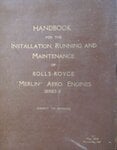Shortround6
Lieutenant General
As usual there may be both elements of truth and elements of "not truth" in some of these positions.
Ford car engines were made of cast iron and would probably take a much higher level of abuse in assembly than an engine made of Aluminium. I had an Oldsmobile for a while that used an aluminium engine (later sold to Rover) and some friends that worked on American cars were astounded at the torque ratings on the head bolts compared to American. It was almost 50 years ago so I forget what the exact settings were but the Aluminium engine head bolts were torqued to a much lower setting than head bolts going into an iron engine.
I would also note that there may be a world of difference between an air tool used on an assembly line (more carefully adjusted or regulated?) and the ones used by tire changers at the local tire shop (I have broken several studs trying to remove a flat tire that was air wrenched on, that or the stud was already stretched/fractured?)
Point in bring up the weight of the piston-rod set was not to claim that RR was doing something others were not but to bring up that it might have been possible for a file to be used in some instances (like helping to lighten up one or two pistons out of 12) but not anywhere near most parts being filed to fit.
The whole filed to fit thing is fabrication as any file marks on any highly stressed part is a fatigue crack just waiting to start. Most parts. like con rods were highly polished and any blemishes could cause the part to rejected at inspection, well before assembly and there isn't a whole lot you can do with a file to adjust the fit of a con rod or crankshaft.
Also note that an American Ford 85-95hp Ford Flathead V-8 weighed about 525lbs or more than a 200hp DH Gipsey six engine or about the same as a Lycoming 9 cylinder R-680 225-300hp radial engine.
Tolerances for easy manufacture they may have had, but the margins of error in metallurgy and assembly were huge compared to even small aircraft engines,
Ford car engines were made of cast iron and would probably take a much higher level of abuse in assembly than an engine made of Aluminium. I had an Oldsmobile for a while that used an aluminium engine (later sold to Rover) and some friends that worked on American cars were astounded at the torque ratings on the head bolts compared to American. It was almost 50 years ago so I forget what the exact settings were but the Aluminium engine head bolts were torqued to a much lower setting than head bolts going into an iron engine.
I would also note that there may be a world of difference between an air tool used on an assembly line (more carefully adjusted or regulated?) and the ones used by tire changers at the local tire shop (I have broken several studs trying to remove a flat tire that was air wrenched on, that or the stud was already stretched/fractured?)
Point in bring up the weight of the piston-rod set was not to claim that RR was doing something others were not but to bring up that it might have been possible for a file to be used in some instances (like helping to lighten up one or two pistons out of 12) but not anywhere near most parts being filed to fit.
The whole filed to fit thing is fabrication as any file marks on any highly stressed part is a fatigue crack just waiting to start. Most parts. like con rods were highly polished and any blemishes could cause the part to rejected at inspection, well before assembly and there isn't a whole lot you can do with a file to adjust the fit of a con rod or crankshaft.
Also note that an American Ford 85-95hp Ford Flathead V-8 weighed about 525lbs or more than a 200hp DH Gipsey six engine or about the same as a Lycoming 9 cylinder R-680 225-300hp radial engine.
Tolerances for easy manufacture they may have had, but the margins of error in metallurgy and assembly were huge compared to even small aircraft engines,

